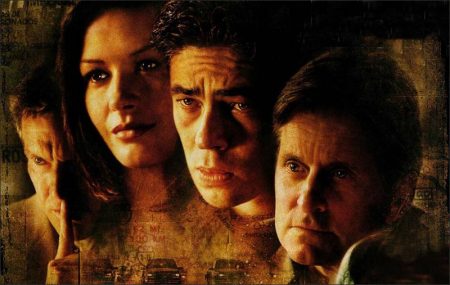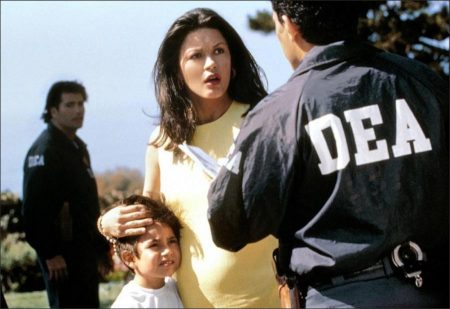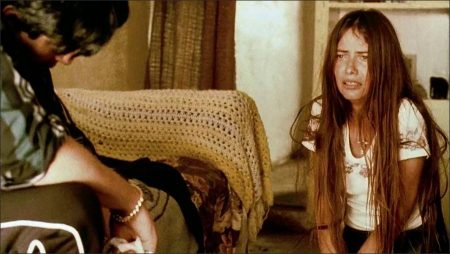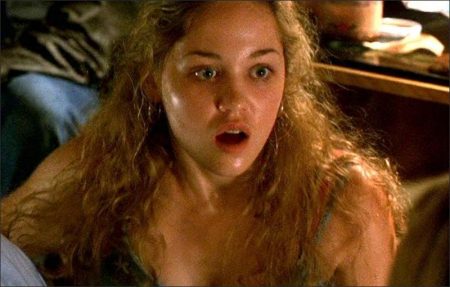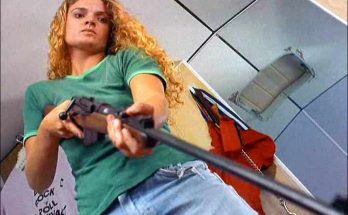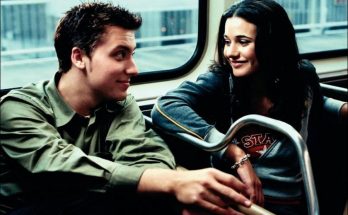Taglines: No one gets away çlean.
Traffic movie storyline. A modern day look at America’s war on drugs told through four separate stories that are connected in one way or another. A conservative judge who’s just been appointed as the US drug czar learns that his teenage honor student daughter is a drug addict. A beautiful trophy wife struggles to save her wealthy husband’s drug business, while two DEA agents protect a witness with inside knowledge of the spouse’s business. In Mexico, a slightly corrupt, yet dedicated cop struggles with his conscience when he learns that his new boss may not be the anti-drug official he made himself out to be.
Traffic is a 2000 American crime drama film directed by Steven Soderbergh and written by Stephen Gaghan. It explores the illegal drug trade from a number of perspectives: users, enforcers, politicians, and traffickers. Their stories are edited together throughout the film, although some of the characters do not meet each other. The film is an adaptation of the 1989 British Channel 4 television series Traffik.
20th Century Fox, the original financiers of the film, demanded that Harrison Ford play a leading role and that significant changes to the screenplay be made. Soderbergh refused and proposed the script to other major Hollywood studios, but it was rejected because of the three-hour running time and the subject matter—Traffic is more of a political film than most Hollywood productions. USA Films, however, liked the project from the start and offered the filmmakers more money than Fox. Soderbergh operated the camera himself and adopted a distinctive color grade for each story so that audiences could tell them apart.
Traffic was given a limited release on December 27, 2000 in four theaters where it grossed USD $184,725 on its opening weekend. It was given a wide release on January 5, 2001 in 1,510 theaters where it grossed $15.5 million on its opening weekend. The film made $124.1 million in North America and $83.4 million in foreign markets for a worldwide total of $207.5 million, well above its estimated $48 million budget.
Shooting Locations
Half of the first day’s footage came out overexposed and unusable. Before the financiers or studio bosses knew about the problem, Soderbergh was already doing reshoots. The insurers made him agree that any further mishaps resulting in additional filming would come out of the director’s own pocket. Soderbergh shot in various cities in California, Ohio and Texas, on a 54-day schedule and came in $2 million under budget. The director operated the camera himself in an effort to “get as close to the movie as I can,” and to eliminate the distance between the actors and himself.
Soderbergh drew inspiration from the cinema verite style of Ken Loach’s films, studying the framing of scenes, the distance of the camera to the actors, lens length, and the tightness of eyelines depending on the position of a character. Soderbergh remembers, “I noticed that there’s a space that’s inviolate, that if you get within something, you cross the edge into a more theatrical aesthetic as opposed to a documentary aesthetic”. Most of the day was spent shooting because a lot of the film was shot with available light.
For the hand-held camera footage, Soderbergh used Panavision Millennium XLs that were smaller and lighter than previous cameras and allowed him to move freely. In order to tell the three stories apart, he adopted a distinctive look for each. For Robert Wakefield’s story, Soderbergh used tungsten film with no filter for a cold, monochrome blue feel. For Helena Ayala’s story, Soderbergh used diffusion filters, flashing the film, overexposing it for a warmer feel.
For Javier Rodriguez’s story, the director used tobacco filters and a 45-degree shutter angle whenever possible to produce a strobe-like sharp feel. Then, he took the entire film through an Ektachrome step, which increased the contrast and grain significantly. He wanted to have different looks for each story because the audience had to keep track of many characters and absorb a lot of information and he did not want them to have to figure out which story they were watching.
Benicio del Toro had significant input into certain parts of the film; for example, he suggested a simpler, more concise way of depicting his character kidnapping Francisco Flores that Soderbergh ended up using. The director cut a scene in which Robert Wakefield smokes crack after finding it in his daughter’s bedroom. After rehearsing this scene with the actors, he felt that the character would not do it; after consulting with Gaghan, the screenwriter agreed and the filmmakers cut the scene shortly before it was scheduled to be shot.
Traffic (2001)
Directed by: Steven Soderbergh
Starring: Michael Douglas, Benicio Del Toro, Luis Guzmán, Erika Christensen, Dennis Quaid, Catherine Zeta-Jones, Jacob Vargas, Emilio Rivera, Michael O’Neill
Screenplay by: Simon Moore
Production Design by: Philip Messina
Cinematography by: Steven Soderbergh
Film Editing by: Stephen Mirrione
Costume Design by: Louise Frogley
Set Decoration by: Kristen Toscano Messina
Music by: Cliff Martinez
MPAA Rating: R for pervasive drug content, strong language, violence and some sexuality.
Distributed by: USA Films
Release Date: January 5, 2001
Views: 167
